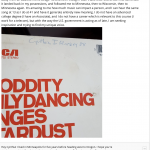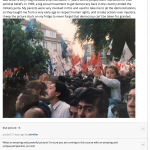
“As a classroom community, our capacity to generate excitement is deeply affected by our interest in one another, in hearing one another’s voices, in recognizing one another’s presence” (hooks, 1994, p.8)
As bell hooks reminds us, people learn well when they learn in community. Building community is difficult enough when it involves real people in geographic proximity to one another. Even in a face to face classroom, creating community can be challenging. Had we been told, during the early planning of Smith College’s first MOOC – Psychology of Political Activism: Women Changing the World – that our charge was to create community with more than 15,000 people from 149 countries, we might have been overwhelmed! But, we plunged into the endeavor with an approach of thoughtful experimentation, a touch of naivete about what was ahead, and we learned a great deal along the way.
Smith launched this eight week MOOC first in March 2016, and ran the course a second and third time in September 2016 and January 2017, respectively. The course was based on a seminar that Professor Lauren Duncan has taught at Smith for nearly two decades and applied psychological theories about what motivates people to become politically active to rich, multimedia case studies of nine women activists whose materials are housed in the Sophia Smith Collection. The course will not run again, but visitors are welcome to explore the material here.
Below are three of the lessons we learned about community building in this virtual space.
Discovering the hidden cohort
Ultimately, we weren’t faced with building community with 15,000 people. We weren’t even required to build community with the approximately 6,000 people registered for any one course run. That is because what we learned, very quickly, is the amount of people who register for a MOOC does not necessarily correspond with the amount of people who actively participate in a MOOC.
Instead, we discovered a core group of people who remained active, meaning they posted on the discussion forum and submitted assignments. Active participants ranged in number from 60 to 100 people. Additionally, the core group was divided further into smaller study groups, each of which focused on one of the activists to study. This is a much more reasonable size when attempting to build community, whether face to face or virtual. As one participant noted about her study group during the last week of class:
“I am so thankful for being able to read many of the amazing, insightful responses within my study group and drawing inspiration from strangers. Many of us agree, some of us do not and isn’t that the most beautiful part of life!”
Sharing stories, globally
A large part of the MOOC centered on story. The multimedia case studies were compiled from rich oral histories of nine powerful women activists. The psychological theories themselves examine the stories that people tell themselves and others about their lives. The archives, and all the stories held within the objects in the activists’ collections, were a central component.
We also brought in course participants as storytellers themselves, and in their writing asked them to connect their academic learning with their personal lives. When participants shared their stories with one another during the first week of the course, the sense of community was established.
In an “introduce yourself” activity, participants were asked to describe an object of importance to them, just as the activists do on video within the course. Below are two examples of of stories participants shared in the discussion forum.
Making it personal
Similar to storytelling, we believed that creating spaces for personal connection would help participants to feel that they were part of a community. This was facilitated in three ways:
- With other participants (via sharing stories and responding to one another in the discussion forum)
- With the instructional team (we were committed to responding as many individual posts as possible, but always minimally responding to every post that did not already have a comment from a fellow participant), and
- With Smith College. The first time we ran the course 35% of the registrants were affiliated with Smith in some way. The second and third times this number dropped to 8%. But, many of those who were Smith affiliated described the connection with Smith as being a primary driver for taking the course. In the following clip, Smith ‘16 alumna Hannah Sachs, describes the importance of her connection to Smith while participating in the MOOC.
In conclusion, we used an age-old community tradition (storytelling), with a well-worn pedagogical tool (study groups) and a traditional online tool (discussion forum) in an attempt to build an online community. We hope to continue to refine this approach in Smith’s next MOOC (yet to be determined), so stay tuned!
You can follow us on Twitter @ETSSC.

